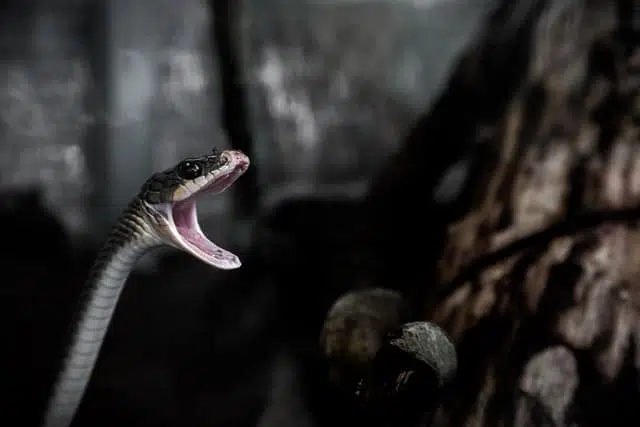Welcome to the complete guide on All Venomous Snakes In The United States. Growing up, we all must have heard scary and fascinating stories about venomous snakes, especially from the ones who have spent a fraction of their life in a village or countryside.
They do sound scary (very scary), making us wonder if we can ever survive a snake bite. Want to compare to another snakes bite? As relieving as it may sound, many people survive snake bites due to the availability of anti-venom in the modern world.
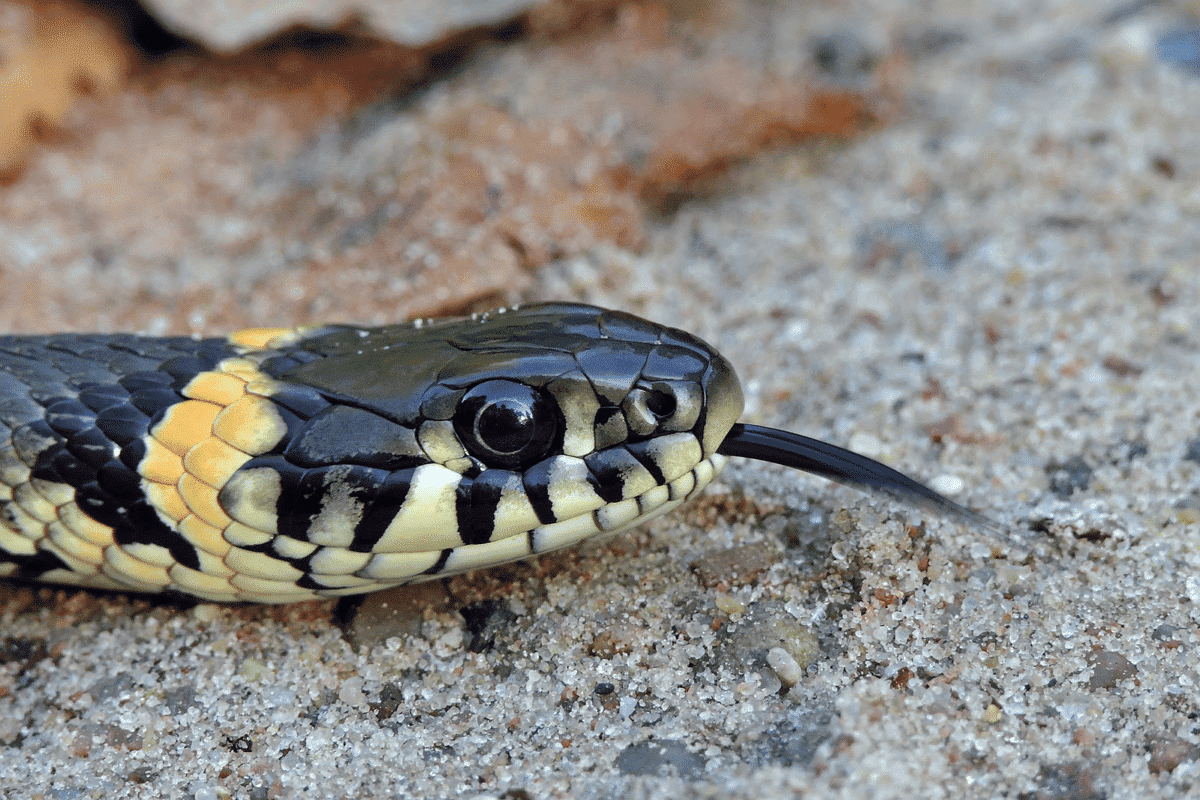
Even so, this does not mean everyone survives them. A bite by a venomous snake may take down a person quicker than you would realize. If not death, the venom can inflict permanent or temporary disability in an infected person’s body.
Moreover, if you are a native of the United States(US), you may have bad news. A wide variety of the deadliest snakes reportedly reside in the US.
Let’s learn more about the various venomous snake species in the United States.
Species Of All The Venomous Snakes That Can Be Found In The United States
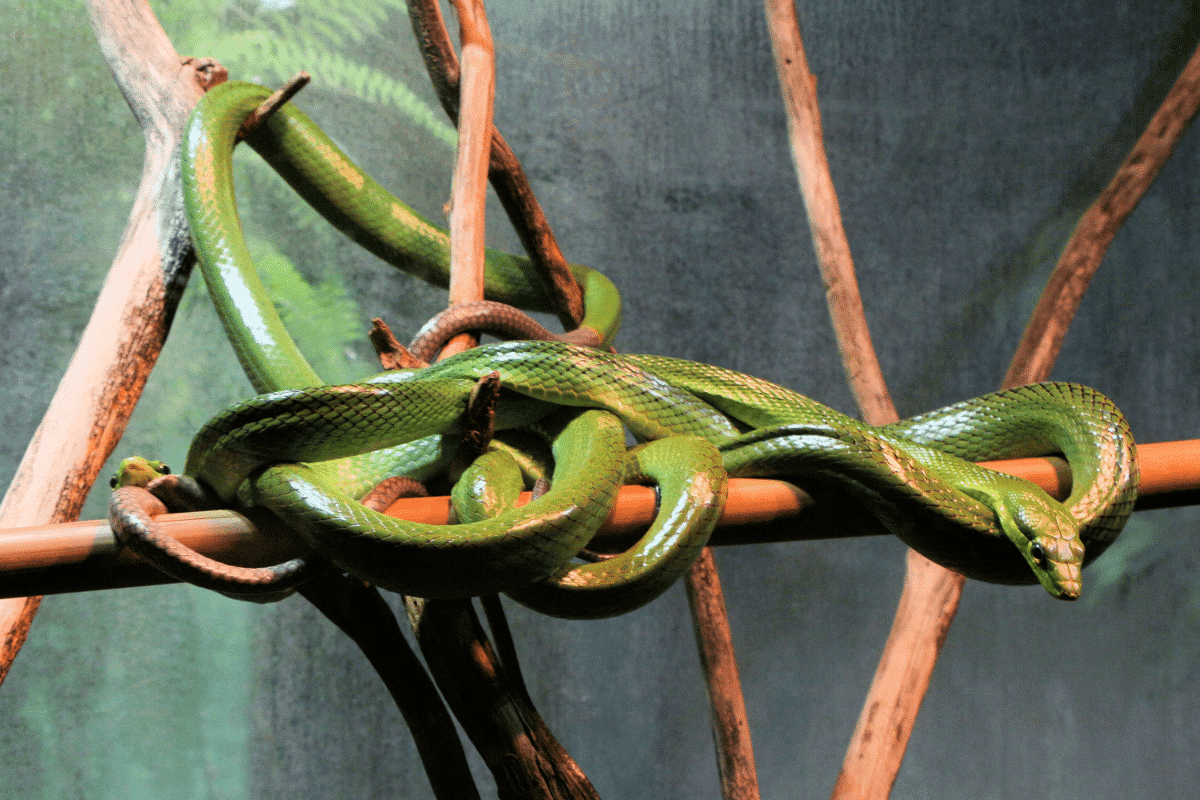
It is a rather regrettable fact that the likelihood of you encountering a venomous snake bite in the US is relatively high.
To be precise, thirty species of venomous snakes have been discovered in the US, out of which twenty-three are rattlesnakes, three are coral snakes, two are cottonmouth, and two are copperheads.
Subsequently, the number of snake bites occurring annually has reportedly increased from seven thousand to eight thousand bites per year.
Out of all the venomous snakes found in the United States, the bite from a rattlesnake is considered more lethal to a human being. Compared to copperhead bites, the probability of death or permanent disability due to rattlesnake bites is four times greater.
Therefore, as a safety measure (or just for the sake of information), we must know everything about the various venomous snakes, including their appearance, size, and habitats, to avoid becoming their feast.
So, stick right here with us to learn more!
Distinctive Facts About A Rattlesnake
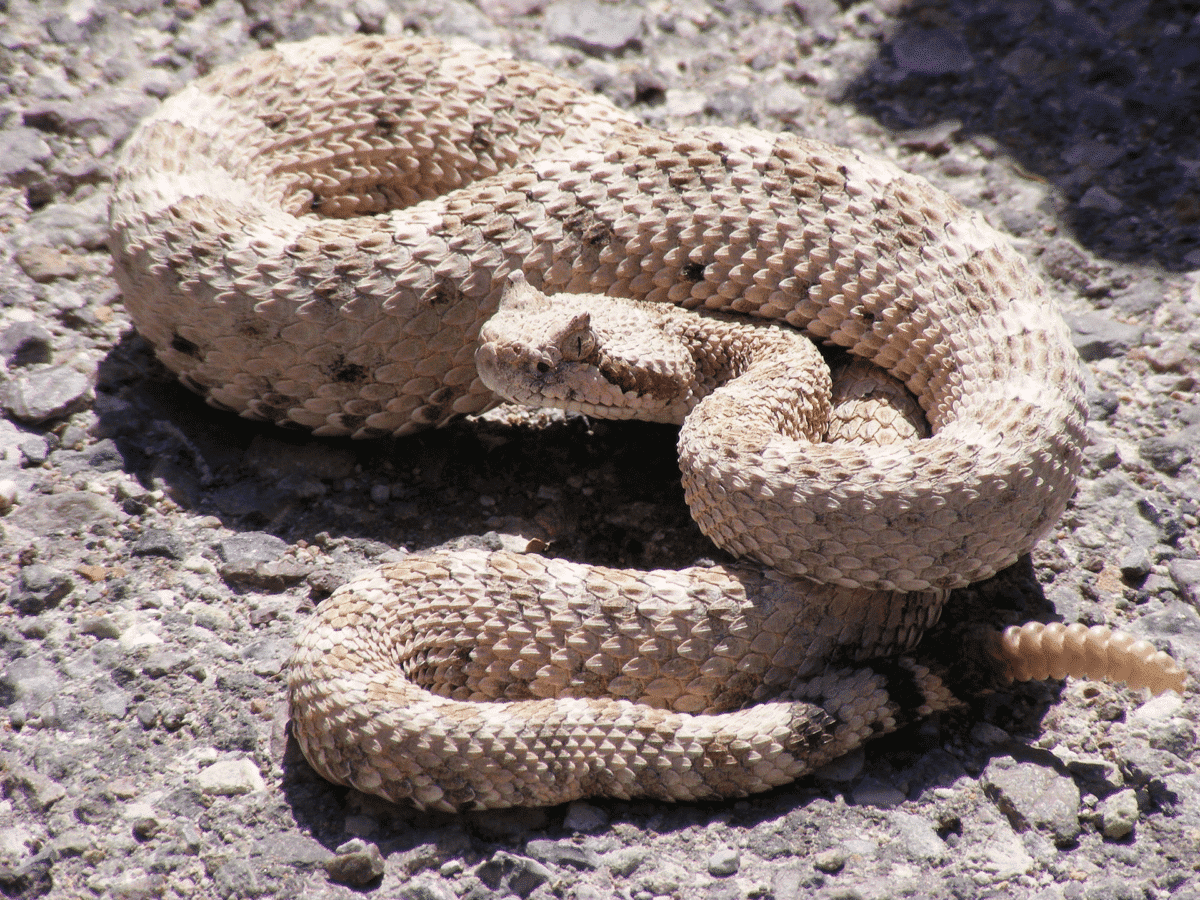
Want to compare with another viper? Let’s look at The Fer-De-Lance Pit Viper Bite.
Rattlesnakes, belonging to the family of pit vipers, are the scariest serpents out of all the venomous snakes found in the United States.These spooky critters get their name from a rattle at the tip of their tail that produces a series of intense rattling sounds due to vibration as a warning sign to alert their predators or people near them.
Below mentioned are the distinguishing characteristics of rattlesnakes that make them a rather intriguing creatures of the wild.
- Size And Appearance
The size of a rattlesnake varies between approximately one to eight feet, according to their species. For instance, the eastern diamondback, the giant rattlesnake, ranges up to eight feet in length and ten pounds in weight.
Also, these serpents possess very thick and scaly skin with many colors and patterns on their body.
Their appearance varies primarily according to their habitat. They have dark-colored patterns of diamonds, hexagons, or other quadrilaterals beautifully blended on light-colored backgrounds.
Furthermore, their distinguishing physical characteristics also include a triangular head coupled with vertical pupils resembling those of cats.
- Habitat
Most rattlesnakes reportedly reside in the southwestern US and Mexico, with Arizona being the state with the most abundant number (thirteen, precisely).
In addition, the most remarkable fact about these serpents is that they can fit in any environment. They can readily survive in any surroundings, be it a grassland, swampland, or a high hill.
However, they prefer living in rough terrains with dry climates, such as deserts or rocky hills, as they aid in camouflage to hide from predators. They spend their time in trees or rocky apertures where they hibernate in winter.
- Defensive Behavior
Rattlesnakes have unique ways of defending themselves from potential threats.
As mentioned, they may use their rattle to signal their predators to back off. Additionally, they may fully coil their bodies and raise their head upright as an ominous sign of attacking their predators.
Furthermore, another phenomenon of safeguarding themselves is through hissing, similar to the cats. The hissing sound created by their throats is a warning signal for their attackers and passersby.
- Diet
Many small animals like mice, birds, lizards, and frogs become the meal for rattlesnakes once every week (their appetite is surprisingly quite less in adulthood). Luckily, they don’t feed on humans. The only reason why they attack them is solely for defense.
These serpents incorporate distinct preying mechanisms. For instance, their sharp eyesight and active smelling sense make hunting easy for them. Moreover, the heat-sensing pits on their nose help them locate their prey in darker regions.
After locating their target, the monstrous serpents strike them through the two powerful fangs in their mouth that release venom to kill their prey. Subsequently, they gulp down their meal wholly and fall back into their dens to digest the food.
- Venom
The venom of a rattlesnake is all it has to keep its hunters at a distance from it.
It is a potent toxin that damages the blood cells and tissues, halts blood clotting, and inflicts severe pain and swelling in the affected area. Moreover, the neurotoxins lead to severe paralysis in the infected body.
All About Coral Snakes
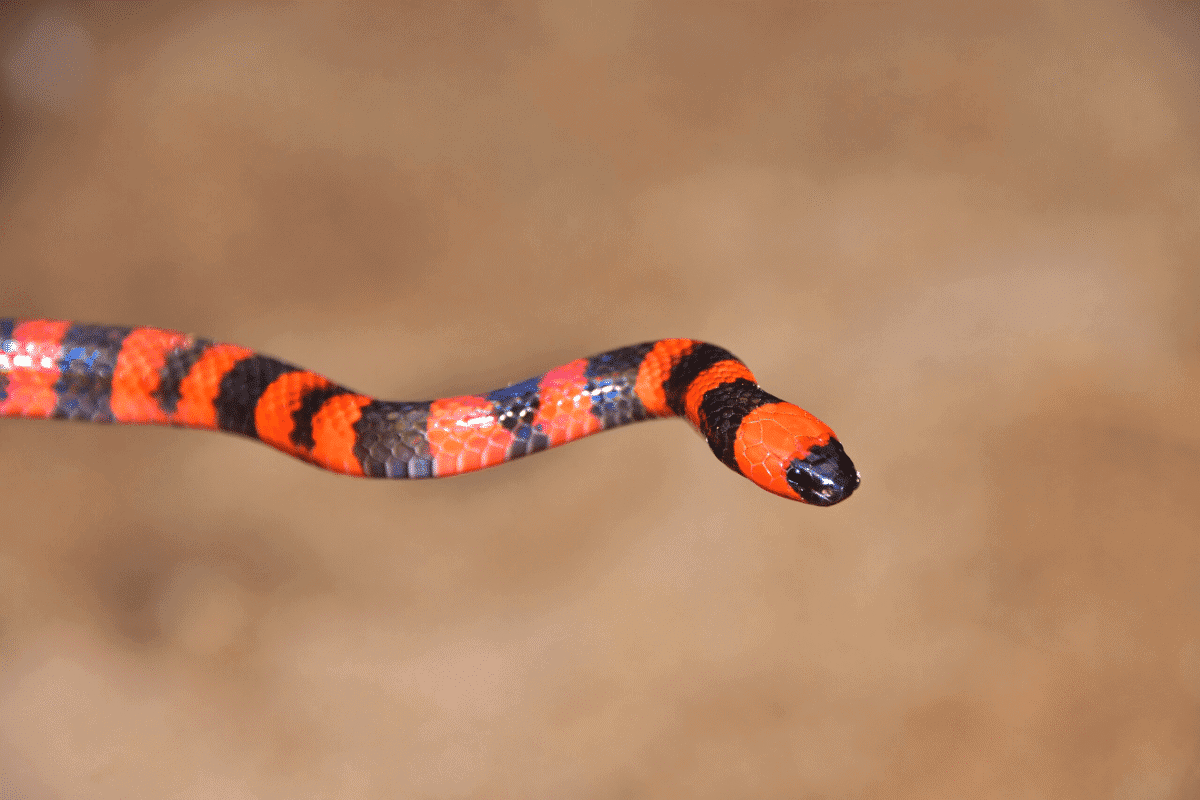
Coral snakes belong to the Elapidae family of highly venomous snakes and can be classified into two groups: the Old World and the New World coral snakes.
The old-world serpents belong to the Asian territory. In contrast, the New World serpents belong to the American region, with the latter having the most fantastic variety of species of coral snakes.
Their vibrant hues, intricate pattern, and the second-strongest venom of all snakes make them a highly peculiar species of the snake world.
An interesting fact: Coral snakes resemble some nonvenomous snakes in the US. To distinguish between them, “red touch yellow, kill a fellow” is a mnemonic made by the people to identify a venomous coral snake through the colorful bands and patterns to ensure their safety.
- Size And Appearance
Coral snakes are slimmer and smaller than other species of serpents, ranging from eighteen meters to five feet, the latter being the most extended length recorded.
A fascinating attribute regarding their appearance is their bulging round face, almost similar to their tails, making it hard to distinguish between them.
In addition, the new world snakes possess a beautiful series of rounded bands throughout their skin in vivid and flashy colors as their pattern.
On top of that, we can regard these terrifying creatures as less scary, thanks to their short and anchored fangs that make it difficult for them to inject venom into their target. This is why they are considered less harmful than rattlesnakes.
- Habitat
Coral snakes are the shyest serpents of all the venomous snakes in the United States.
They prefer living in hidden burrows, for example, under rocks or rotten leaves, mostly coming out of their hiding spots during the rain or breeding season.
You can spot the species in the woody and marshy areas of the southeastern US and desert areas of Arizona and northern Mexico.
- Defensive Behavior
Being a shy species, a coral snake would never attempt to attack their predators or humans unless provoked seriously.
The only reported defensive behavior of these serpents is the way they bite. Since short fangs are impossible to contract, they tend to hold on to their target and repeatedly bite them in chewing motions to inject the venom effectively.
Another behavior has been reported where the serpents make a pop sound by exhaling air out of their cloaca (an opening in their body) to alarm their attackers.
- Diet
These introverted serpents prefer living in isolation and hence, only ever hunt for food they encounter daily without rushing to it.
The coral snakes usually feed on animals smaller than them, such as lizards, tiny rodents, small snakes, and broodlings.
You may also witness acts of cannibalism in these serpents since they don’t mind feeding on their fellow species.
Fun fact: They can go on for weeks and months without eating and still live actively!
- Venom
A coral snake’s venom is regarded as the second most powerful due to the presence of highly potent neurotoxins that can paralyze its victim instantly.
The venom can lead to breathing failure, muscular numbness, and pain and swelling in the infected area. If left untreated, the venomous bite can lead to cardiac arrest.
Minor symptoms of a coral snake bite include slurred speech, blurred vision, seizures, headache, nausea, and vomiting.
Click here to discover more about the potential threats regarding a coral snake’s venom.
A Detailed Guide On Cottonmouth Snakes
A cottonmouth snake (scientifically known as Agkistrodon piscivorus) is a venomous serpent belonging to the pit vipers family, closely related to the copperhead snakes.
These dreadful creatures are named ‘cottonmouth’ due to their white-colored mouth that they show off when feeling threatened.
Being fond of aquatic environments, cottonmouths are primarily found in watery regions, although they can also readily survive on land. Due to this behavior, the semiaquatic serpent is named a ‘water moccasin.’
They are often mixed up with other nonvenomous water snakes due to their typical appearance.
So, let’s discover more about what makes this species different.
- Size And Appearance
Cottonmouths are large and heavy serpents compared to other aquatic snakes, ranging from around two to four feet and weighing approximately two hundred to six hundred grams.
These species have thick muscular skin with ridged scales all over their body. They come in various colors, mainly dark brown, gray, and black hues, with faded patterns on their body. The infants are distinguished through their yellow-tipped tails.
Moreover, they have triangular-shaped heads and vertical eyes with dark-patterned stripes on their face to aid in camouflage.
Additionally, they carry heat-sensing pits on their face that are common to all pit vipers, including rattlesnakes and copperheads.
- Habitat
Cottonmouths are primarily found in shallow aquatic bodies, such as creeks, swamps, marshes, and lake shores. However, they do not hesitate to live on land in rainforests or rocky and mountainous terrains.
Being US natives, these gruesome serpents primarily reside in areas ranging from southeastern Virginia to Florida and northern Illinois to southern Indiana.
- Defensive Behavior
Having the most dangerous venom out of most snakes, cottonmouths are often regarded as very dangerous. However, they do not harm human beings unless teased or grabbed. Quite astonishingly, they tend to hide away if they encounter humans.
In case of an attack, cottonmouth snakes coil their bodies and open their mouths to the full extent. The white-colored mouth contrasts with their dark-colored bodies, thus alerting their attackers.
In addition, they may produce vibrating sounds from their tails, similar to the ones by rattlesnakes.
Furthermore, they release a stinking spray from glands underneath their tails to compel their attackers to back off.
- Diet
Even though they can be cannibalistic (eat their kind), their diet mainly comprises frogs, fish, lizards, birds, baby alligators, and other small animals.
They have a rather conventional way of catching their prey. For instance, while preying on fish, they corner them near the edge of the water body and throw their attack.
In addition, they hunt small animals by first biting and killing them through their venom. Later, they coil themselves around the victim’s body to immobilize them and swallow the food.
- Venom
The venom of water moccasins is considered highly toxic for living creatures, although the chances of death due to their bite are low to none for a healthy human being.
The presence of hemotoxins in their venom accounts for the disruption in blood clotting. Moreover, the bite may leave behind deep scars that, in severe cases, may lead to amputation of the infected body part.
The Particulars Of A Copperhead Snake
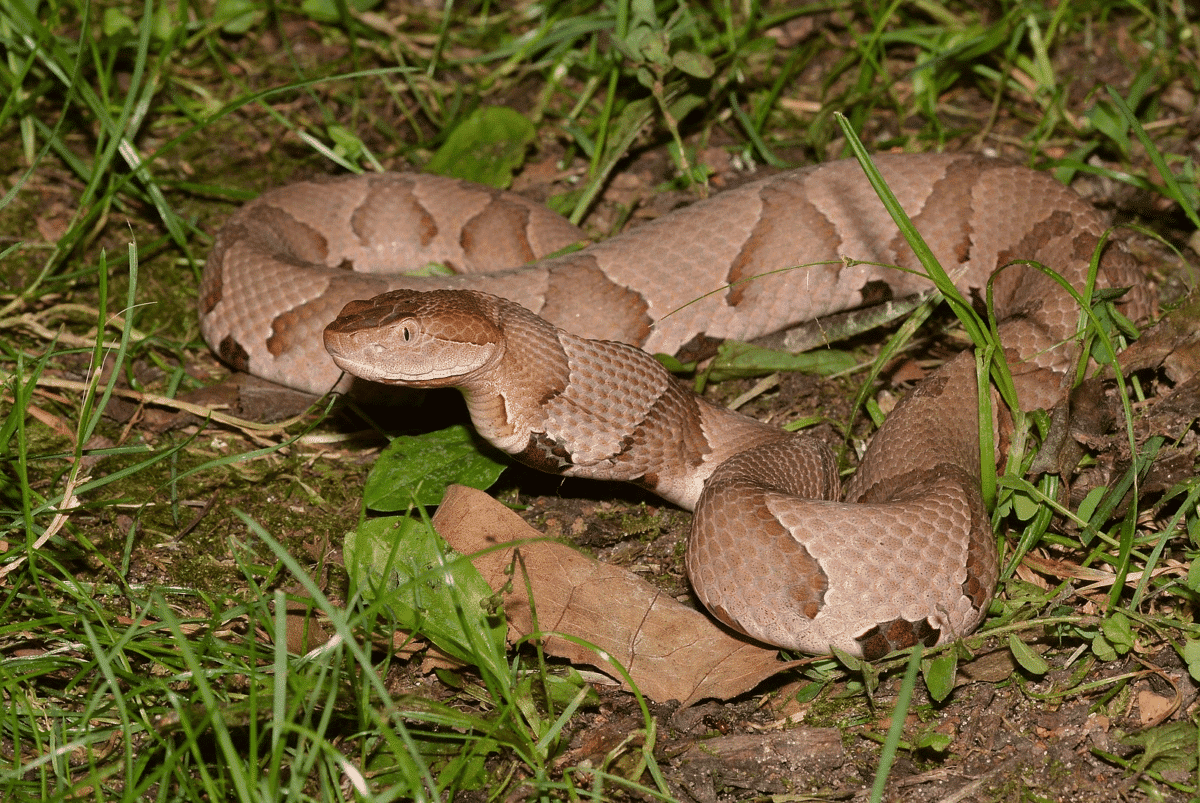
Copperheads (scientifically known as Agkistrodon contortrix) are venomous snakes that, like rattlesnakes and cottonmouths, belong to the family of pit vipers. Their heads having the perfect copper-red color gives them their name as a ‘copperhead’ snake.
In addition, their characteristics are very much similar to the other snakes belonging to the pit viper family. For instance, they contain heat-sensing pits like every other pit viper to detect their predators or catch their prey.
However, the danger intensity of their venom is way less than other pit vipers, such as rattlesnakes.
- Size And Appearance
The venomous serpents are medium-sized, with lengths ranging from two to three feet. Moreover, the female species are known to be longer than the male species.
The typical pattern of copperhead snakes makes them a remarkable species of nature. The beautiful dark brown and red hues, coupled with the intricate design on their bodies (almost resembling the shape of an hourglass) make them a highly distinctive breed of pit vipers.
These serpents possess a broad head and slim neck accompanied by muscular and scaly skin that distinguishes them from other species of similar patterns.
- Habitat
Being native to the US, you can find these creatures in several states, including Florida, Georgia, Illinois, Indiana, Massachusetts, New York, Carolina, and Texas.
The copperhead serpents are more than happy to live in diverse places. However, they mainly prefer settling in tough terrains like rocky hills, woodlands, and even deserts.
Warning! Be cautious around old, abandoned buildings and scrap yards to avoid encountering these venomous creatures.
- Defensive Behavior
Copperheads are serpents who love isolation. Similar to rattlesnakes, they hibernate in dens and are, therefore, shyer than most of the venomous creatures out there.
This implies that they don’t have a well-built defensive mechanism. Instead, in case of an encounter with their predators or humans, they get stunned in their place and let their body play its part in camouflage (which almost always works well for them).
Additionally, they vibrate their tails like a rattlesnake to alarm their attackers to back off.
- Diet
The copperheads are less likely to hunt for food, such as mice, lizards, and insects, and more likely to wait for their prey to pass by to attack. They are ambush predators who cleverly attract their prey in various ways.
For instance, the serpents waggle their tails upright to make them look like a worm. This way, frogs and lizards fall into the trap and approach the snakes only to become their meal.
In case of a larger prey, copperheads let their venom kill and use their flexible jaws to swallow the prey wholly.
- Venom
Fortunately, the venom of a copperhead is mild and not too dangerous for humans. Their hemotoxic venom leads to temporary tissue inflammation and severe pain at the infected area coupled with intense allergic reactions and nausea.
The Final Word on Venomous Snakes in the United States
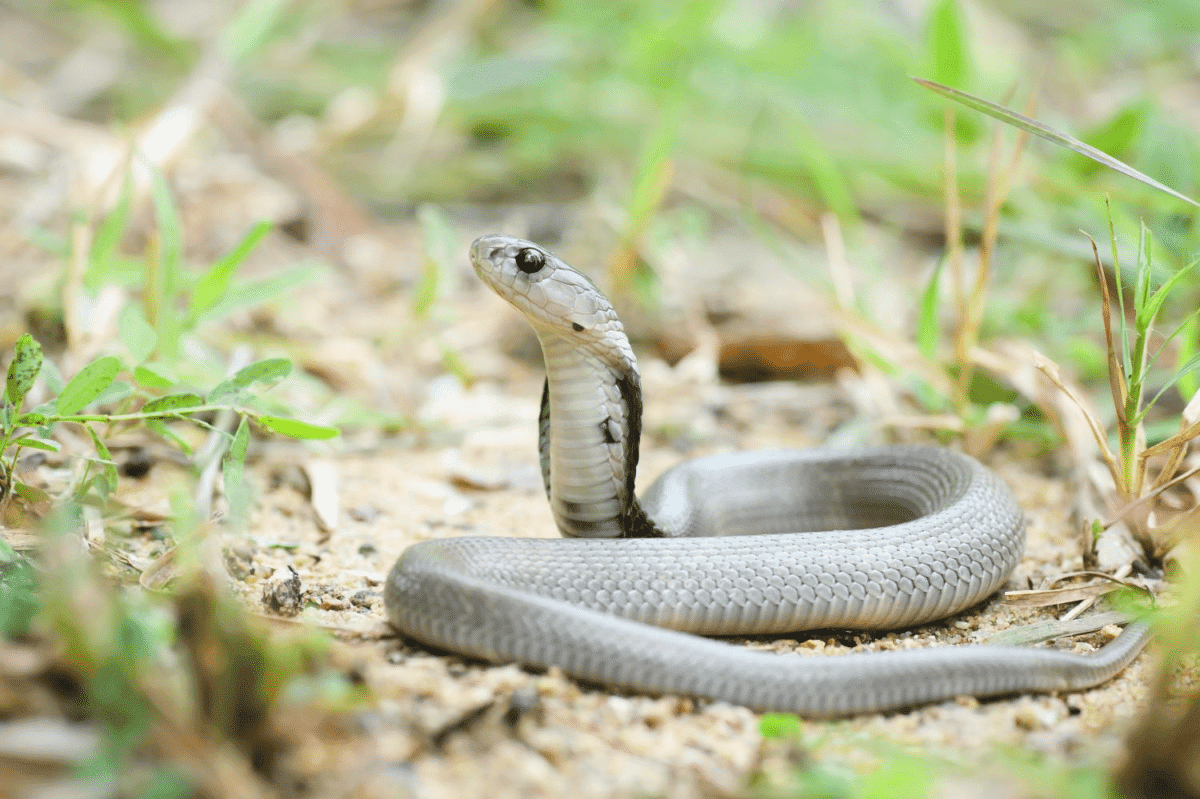
By now, you might have grasped enough knowledge on the various species of venomous snakes in the US.
Unfortunately, their population is declining at an increasing rate due to the countless urbanization tactics carried out by humans, leading to a loss in their food and habitats.
Therefore, even if these creatures are harmful, we must never hesitate to protect these creations of nature.
For more dangerous animals in the US, look at the Top 10 Dangerous Animals in the USA.
Join our Forum for free today!

- Third Elk Incident in Two Weeks in Estes Park, Colorado and How to Stay Safe - July 4, 2024
- 17 Animals That Mate For Life - June 24, 2024
- 13 Animals That Lay Eggs (Some Might Surprise You!) - June 16, 2024

